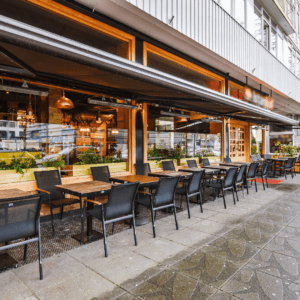Building the perfect restaurant begins with recognizing that every establishment has its own unique vibe. This design style communicates to clients what to expect from the restaurant and plays a significant role in setting the tone for the overall dining experience. The ambiance and design elements are not just cosmetic—they form the backbone of the brand identity and influence customer perceptions.
For restaurant owners, creating a flawless design is no small feat. Many have looked back and realized that some design errors could have been avoided with better foresight. Opening a restaurant requires juggling numerous tasks—finding the right contractors, complying with regulations, wooing investors, and ensuring every detail is perfect. To simplify this complex process, here are some essential tips for building the perfect restaurant.

Free-Flowing Floor Plan
A well-thought-out restaurant floor plan serves as the blueprint for the entire establishment. It outlines the layout of rooms, tables, and service areas, showcasing how each element connects. A functional floor plan benefits not only the diners but also the staff. Waiters and bartenders can serve clients more efficiently, new employees can quickly learn the layout, and workflow within the restaurant becomes more seamless.
When designing your restaurant, ensure the layout promotes efficiency while maintaining a sense of openness. The goal is to create a space that feels inviting and navigable for both guests and staff.
Compliance with Building Codes and Regulations
Adhering to local building codes and regulations is an essential part of the design process. Restaurant owners should collaborate with experienced architects or interior designers who are familiar with these requirements. Neglecting compliance could lead to costly delays or even legal issues.
Key areas to focus on include:
- Kitchen Requirements: Ensure the kitchen layout supports the needs of chefs and staff. For instance, redundant plumbing systems can help avoid disruptions from clogs, and fire safety devices must be easily accessible near gas stoves.
- Emergency Exits: Properly marked and accessible emergency exits are mandatory.
- Safety Systems: Incorporate fire suppression systems, proper ventilation, and non-slip flooring to enhance safety.
Comfortable Conditions for Guests
Comfort is a critical factor that influences a restaurant’s success. Thermal comfort, indoor air quality, and lighting all contribute to a positive dining experience. Your floor plan should provide ample space for guests to move freely and maintain a sense of personal space. Overcrowding tables can make the environment feel chaotic and uncomfortable.
For restaurants with outdoor spaces, adding umbrellas, heaters, or fans can make patios more enjoyable year-round. These small touches create a lasting impression and encourage repeat visits.
Sufficient Storage
While storage areas are often out of sight for customers, they are crucial to the restaurant’s operations. Buying ingredients in bulk can significantly reduce costs, but this strategy requires ample storage space. A well-organized storage area also minimizes disruptions during service.
Additionally, consider dedicating part of the storage space as a working area for the manager. This area can be used for inventory checks, scheduling, and completing paperwork without interfering with the dining or kitchen spaces.
Strategic Lighting

Lighting is a powerful design tool that sets the mood of your restaurant. Bright, inviting lighting is ideal for family-friendly or casual establishments, while dim, atmospheric lighting works well for upscale or romantic venues. Experiment with layering lights—combining ambient, task, and accent lighting—to create a visually appealing and functional space.
Partnering with the Right Team in Building the Perfect Restaurant
Designing and building the perfect restaurant requires expertise and experience. Adkins Building and Construction specializes in commercial and industrial construction, offering tailored solutions for restaurant owners. From conceptualization to completion, our skilled team ensures that every aspect of your project meets the highest standards.
Contact Adkins Building and Construction today to schedule a free on-site design consultation. Let us help you turn your vision of the perfect restaurant into reality.

